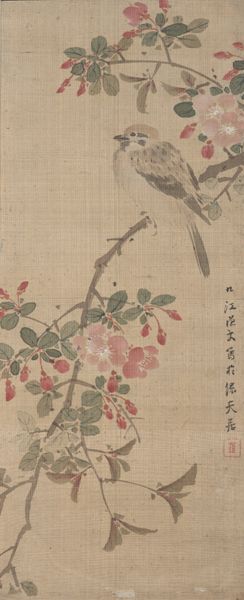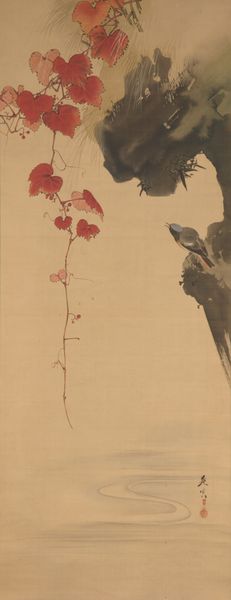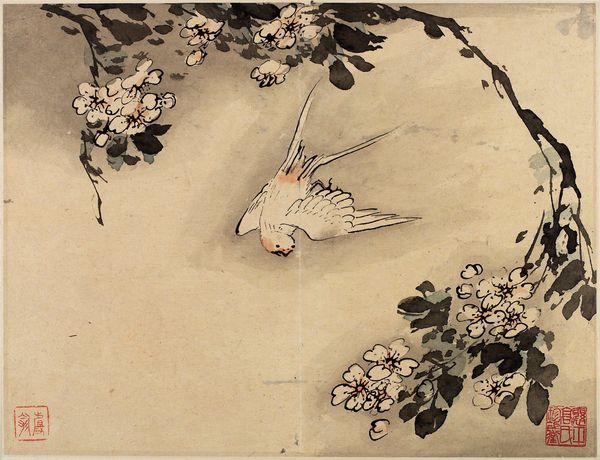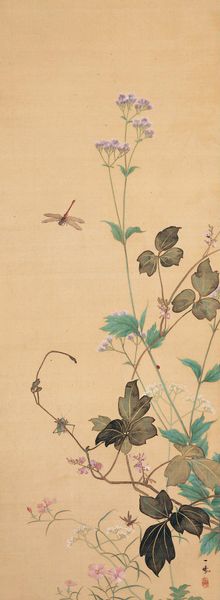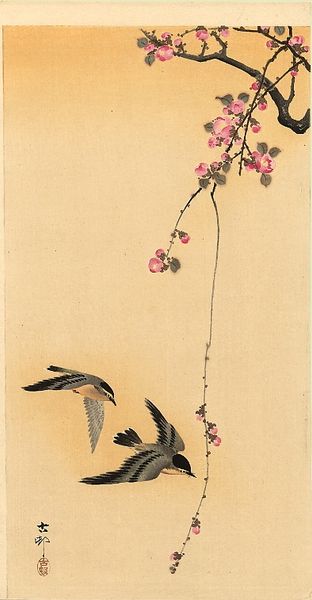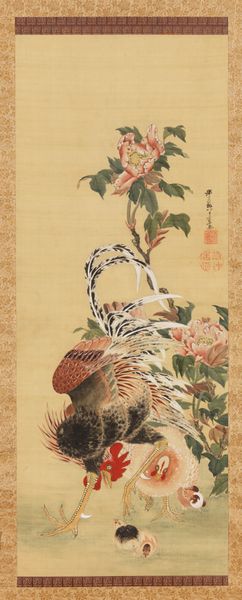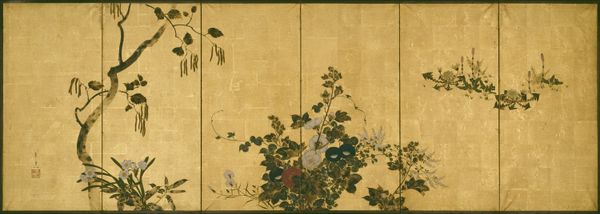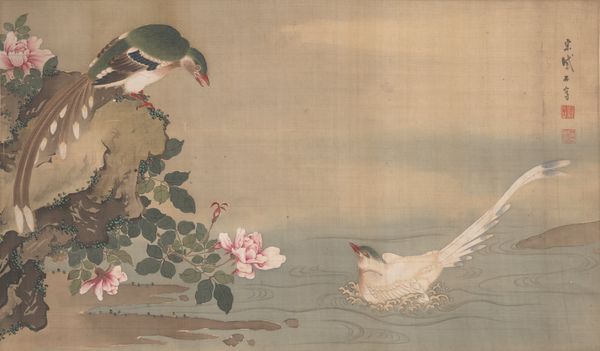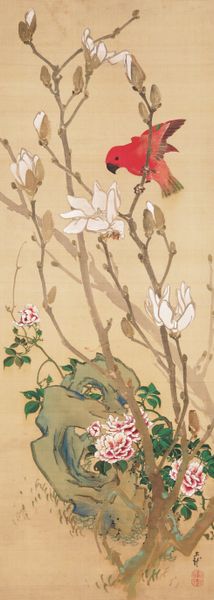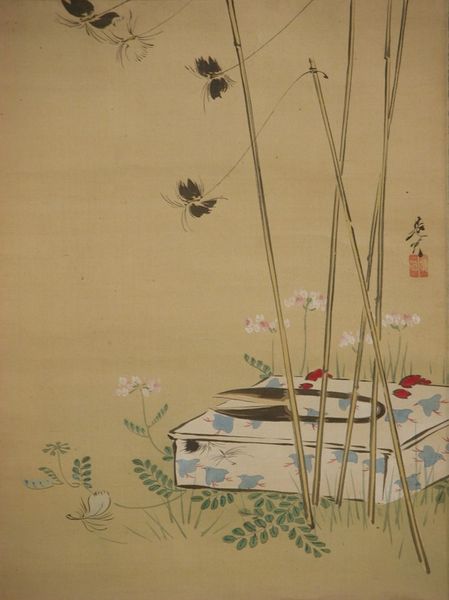
watercolor, hanging-scroll, ink
#
asian-art
#
landscape
#
ukiyo-e
#
watercolor
#
hanging-scroll
#
ink
#
coloured pencil
#
orientalism
#
calligraphy
Dimensions: 42 5/8 × 16 7/16 in. (108.27 × 41.75 cm) (image)80 1/2 × 22 1/16 in. (204.47 × 56.04 cm) (mount, without roller )
Copyright: Public Domain
Curator: Here we have Yamamoto Baiitsu's "Flowers and Pheasants," believed to be from the 19th century. It’s a hanging scroll, created with ink and watercolor on silk. Editor: My initial impression is serenity. It’s delicately balanced. The colors are soft, but there’s a sharpness, particularly in the pheasant’s gaze. A tension in the stillness, perhaps. Curator: Precisely. Baiitsu, steeped in the traditions of Nanga painting, often incorporated symbols associated with longevity and good fortune. Flowers, in general, speak to ephemeral beauty. Editor: Given the history, this piece subtly nods towards class and privilege. A refined, yet potentially unattainable, view of nature reserved for certain elite circles. The pheasants become symbols of status. Curator: Consider, though, the deeper meanings. In Japanese art, birds often carry complex spiritual connotations. The pheasant in particular is said to have divine connections as messengers of the Gods. Editor: That reframes the work entirely. Is it fair, however, to divorce it from the sociopolitical contexts of its creation? I find it hard to look past the embedded ideologies when analyzing older works. Curator: I believe the two interpretations aren’t mutually exclusive. Symbols gain richness from how they adapt across time, echoing differently in each culture that encounters them. The way it borrows and reinterprets traditional Chinese motifs certainly adds a layer to the composition. Editor: Absolutely, this piece makes one think of the concept of "borrowed landscape" in East Asian gardens. Bringing idealized nature inside for contemplation but only certain types of idealized nature are featured. Curator: I agree, and to me, Baiitsu asks us to consider beauty not just as visual experience but as a vessel for transmitting collective cultural knowledge. Editor: Perhaps understanding this piece lies in accepting the simultaneous existence of these competing meanings. To unpack history while allowing its aesthetic qualities to inspire hope. Curator: Nicely put. "Flowers and Pheasants" invites us to look deeply, connecting visual delight with shared cultural echoes. Editor: Yes. A reflection of both our shared and fractured understandings.
Comments
No comments
Be the first to comment and join the conversation on the ultimate creative platform.
